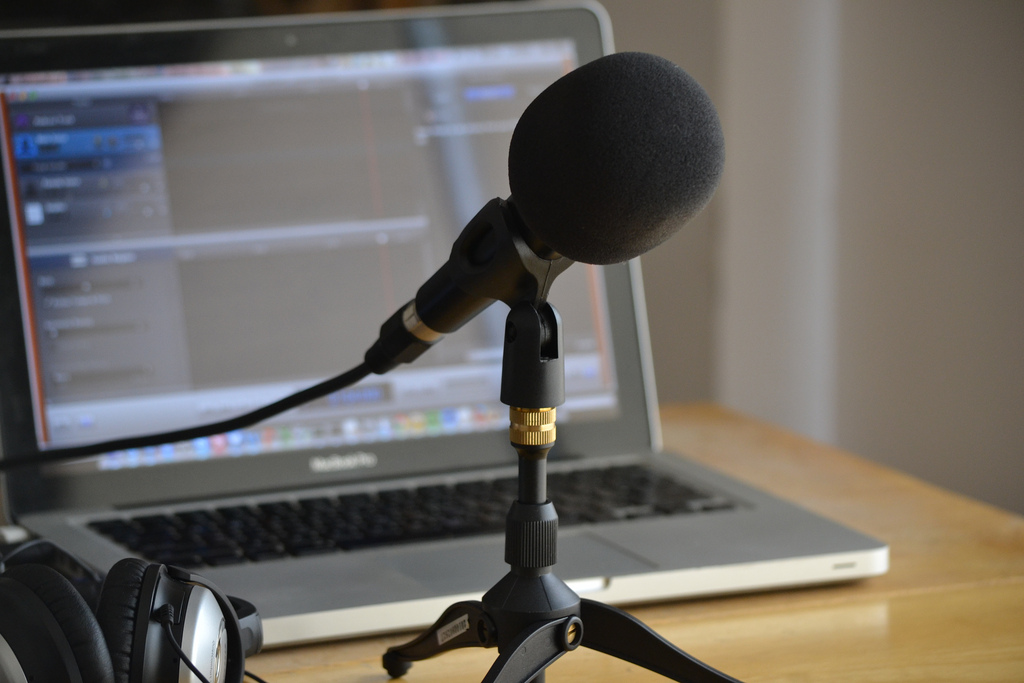
NPR reports downloads of their podcasts were up 14% in 2014, according to the 2015 State of the News Media report. In fact, the number of Americans who have listened to a podcast in the last month has nearly doubled since 2008, from 9% of those surveyed to 17%. Top ranking news podcasts include “BBC Global News,” “CNN Debates,” “60 Minutes,” and “NBC Nightly News.”
Reaching Viewers in Between Newscasts
While the mobile market has allowed TV broadcasters to reach people in places and situations they never could before—in the car, on the bus, walking down the street—there are still situations where mobile video isn’t ideal. You might be able to watch a video on your phone, but you don’t want to be doing that while you drive down the road. You should probably avoid watching videos while you walk around, too—nobody wants to be that guy who runs into a wall because he’s glued to his phone.
Taking a Bite Out of Radio’s Audience
For years, radio has been the main news source for people whose eyes are otherwise engaged—especially people driving during rush hour, the coveted “drive time” space many advertisers like. But podcasts have risen in popularity the past few years because, like satellite radio, they give viewers the option of choosing what they want to hear.
Even with subscription radio services, most of the time listeners only pick the type of programming they want to hear. With podcasts, the audience can choose which individual news pieces they find interesting and listen to them. This not only gives the listener more freedom, but it gives the owner of the podcast valuable data to share with advertisers.
Podcasting: Not Just for Big Networks
Although the most popular news podcasts belong to large, national news organizations, that doesn’t mean that a small local station can’t benefit from podcasting. Some stations worry that podcasts will discourage viewers from watching the news, but this isn’t usually the case; live news broadcasts and social media feeds give the most-up-to-date or breaking news. Podcasts are usually added later. Television also shows viewers what’s happening right now. Podcasting can’t do that, but it does have other benefits.
How to Use Podcasts
Some stations choose to have reporters and anchors read stories from a recent broadcast, or simply upload the audio file from recent broadcasts. This isn’t a bad idea, but it also doesn’t offer the viewer anything special. Simply uploading the audio of a TV newscast can also confuse viewers, as some audio only makes sense with the accompanying video.
The better bet is to share video of regular news broadcasts or packages on the station’s website. Use podcasts to offer more in-depth information about some of the week’s bigger stories. Podcasts are a great way to supplement news broadcasts, even with people who aren’t driving or walking down the street.
For years, newspapers prided themselves on being the more detailed source of news. Over the last few years, however, newspapers have lost ground to online news sources with detailed written pieces. Podcasts are a way TV broadcasters can gain some of the newspaper industry’s lost audience. Without the time constraints of the nightly news broadcast, a podcast can offer additional insight on a topic.
An Easy Way to Use Extra A-Roll
A reporter/photographer team often spends an hour or more gathering video for what ultimately becomes a 30, 60 or 90 second package on air. An interview might last ten of fifteen minutes, and include lots of great soundbites, but the reporter or producer packing the story can only use the most important twenty or thirty seconds of it.
What happens to all that extra video? In most cases, nothing. Occasionally it might be used by a weekend producer desperate to fill time, but most of the time viewers never see it. Most TV stations don’t have time to put together extra packages for the station’s website, and if they do, it only happens occasionally and with the biggest stories. This typically leaves a lot of great content that can be re-purposed into a different delivery vehicle; for example, a podcast.
You can easily upload the audio file of an interview with minimal editing. There’s no need to pick out cover video, check for flash frames, or write anchor intros and tags. Simply write a brief, one-sentence description (such as “Podcast of our full interview with Mayor Jenkins about the new tax law”).
Use Podcasts to Engage with Viewers
Podcasting is also a good way to respond to viewers’ questions or requests for different types of stories. If, for example, your Twitter feed was inundated with questions after you ran a story about local outdoor attractions, you can use those queries to create podcasts with helpful information on topics like, “How to stay safe while camping” or “Outdoor activities for kids.”
Some of that information may be found in the leftover A-roll from the original package about a local attraction. You can also do some quick research and voice tips from experts to add to the story. This takes a few more minutes, but is still less time-consuming than editing a piece with both audio and video. An additional benefit of responding to viewers’ popular questions and the topics they find most interesting, is keeping them engaged with your station in multiple ways, making them more likely to watch your newscasts and visit your social media accounts.
[su_note]Learn more about the School of Broadcast Journalism at the New York Film Academy by clicking here.[/su_note]